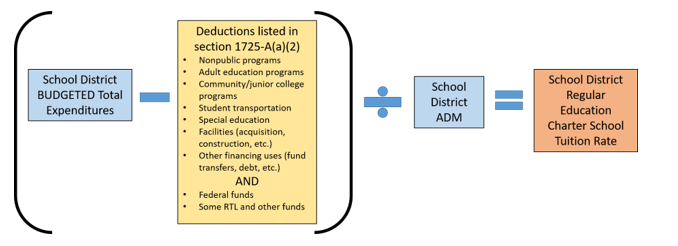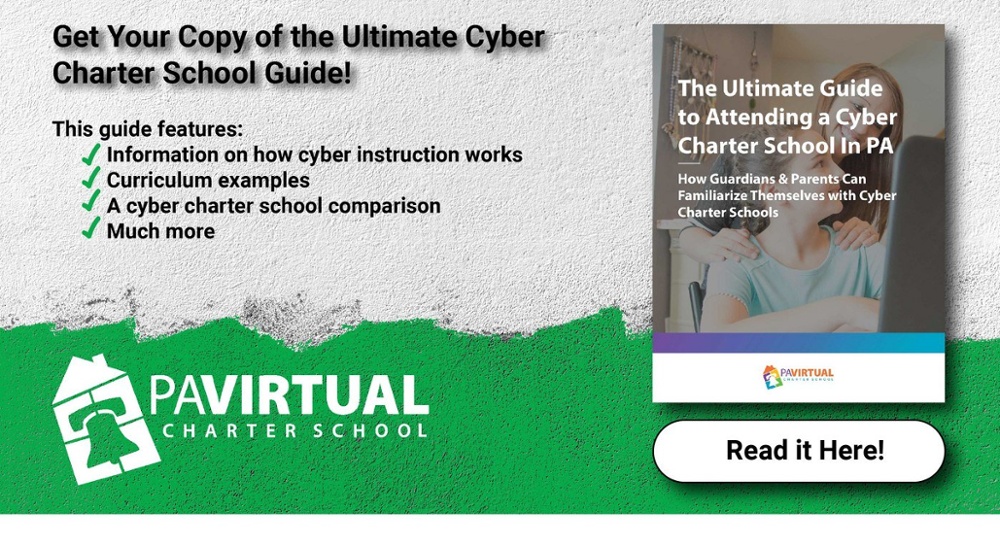As cyber schooling continues to gain increased awareness and popularity, many families often question how exactly it all works. Parents wonder how much cyber education will cost and quickly discover that cyber charter schools do not have a tuition fee. Some questions we frequently get asked at PA Virtual are “If your school is free for families to attend, then how are you funded?” or “How can cyber schools and everything they offer be at no cost to the family?” This post is going to explore how cyber charter schools are funded and how they actually receive less funding than their district school counterparts.
Cyber Schools are Public Schools
First, it’s important to note that a charter school is indeed a public school that operates independently from the local school district. This independence allows charter schools to be able to improve student learning through innovative teaching methods and give families alternative options for public education aside from the traditional brick and mortar school in their resident school district. As public schools, they do not and cannot charge students to enroll and attend. This is the case for all public schools, including local school district brick and mortar schools, brick and mortar charter schools, and cyber charter schools. So, if families are not charged for charter schooling, how exactly is this public education funded?
How is Public Education Funded?
In Pennsylvania, all public schools, including charter schools, are funded by the Pennsylvania taxpayer dollars. A portion of the funding comes from state and federal sources, but a majority of it comes from local sources. Property owners in Pennsylvania pay a property tax every year, and each county or borough utilizes the tax revenue for different expenditures in the community, including public education. Thus, local school districts are primarily funded by PA residents’ property taxes.
In Pennsylvania, there is no set rate for property taxes. Rather, local school boards calculate their tax rates based on their own individually-determined needs and budget. School districts use these taxes to fund things like teacher and administrator salaries, classroom materials, school building maintenance and operations, and for contribution to employee benefits and pensions. Local school boards must factor in all anticipated expenses with how much revenue they expect from local, federal and state sources.
It is often found that wealthier school districts are a result of higher home values in their communities because these school districts bring in more property tax revenue. In contrast, lower income neighborhoods don’t receive as much funding as their wealthier neighboring school districts do, creating a large disparity in access to education resources among different school districts across the state.
Continue reading below...
How are Charter Schools Funded?
For each student that enrolls and attends a charter school, their local school district pays a portion of their funds allocated for the student to the charter school. The Per Pupil Education Rate is the amount of money that the school districts determine is needed to educate a student. The rate will vary depending on each individual school district and whether the student is in regular education or special education. Local school districts determine the cost of each child to attend school based on data from the previous school year. You can learn more about how the Per Pupil Education rate works by checking out this video, How are Cyber Charter Schools Funded in PA.
PA Virtual Charter School, along with the other 14 PA cyber charter schools, enroll students from over 500 school districts across the state. The amount of money per each student varies depending on the district. This results in 500 different charter school tuition rates. Each school district deducts a certain amount of money from the Per Pupil Education Rate to keep within the district, even though the student is no longer being educated at the district school. The school district withholds some of the funds based on the argument that charter schools do not have the same expenses, for example, student transportation services. This amount can often vary but on average Pennsylvania’s public charter schools receive approximately 75% of the school district’s costs to educate a student within their district. That means, on average, the school district keeps the remaining 25%, increasing the amount they can spend on supports and services for students who remain enrolled in their district schools.
According to PA Association of School Business Officials, the school districts calculate their current year budgets from the previous school year. They use what they budgeted at the beginning of the prior year to calculate the rate. The website provides an interactive map of Pennsylvania and its counties and shows how much is budgeted for every regular education student. Below is an example of how the charter school tuition rate is calculated.

Conclusion
As mentioned, cyber charter schools are funded by taxpayers, just like all other Pennsylvania public schools. The difference is that cyber charter schools operate on about 75% of the funding of their school district counterparts. In Pennsylvania, the money follows the student, so cyber charters schools like PA Virtual receive the Per Pupil Education Rate based on the students they enroll, and that amount will vary based on the student’s local school district. Regardless of the particular school they attend, all students in PA have the right to a free, public education. Therefore, school choice is crucial so that each student’s individual needs can be met no matter which type of public school they attend.
For more information on this topic, check out our blog post, "Are Cyber Charter Schools Free?"
Are you interested in learning more about cyber charter schools and how they work? Check out our Ultimate Guide to Attending a Cyber Charter School in PA. This comprehensive guide will answer your questions about cyber schooling and help you decide whether your child would benefit from attending a cyber charter school. In addition, this guide include examples of curriculum, an extensive comparison of all cyber charter schools in Pennsylvania, and much more.






Comments